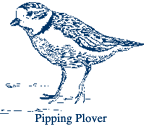Each species plays an independent role in the dynamic functioning of a healthy and stable environment, storing a wealth of genetic information that has taken millions of years to develop and perfect. Despite increased concern over the need to protect endangered and threatened species, the world continues to loose entire species at an alarming rate. As of June 1992 there were 548 plants, animals, fish and birds listed as endangered with another 169 classified as threatened in the United States; some of these species may be harmed directly or indirectly by exposure to pesticides.
Under the Endangered Species Act, passed by Congress in 1973, federal agencies must ensure that any action they carry out or authorize is not likely to jeopardize the continued existence of any listed species, or destroy, or adversely modify its critical habitat. The United States Environmental Protection Agency s (EPA) registration of pesticides is considered to be "authorization" under the Endangered Species Act. Therefore, EPA is required to ensure that the registration of pesticides and their use are not likely to jeopardize endangered species.
In July 1989, EPA proposed an Endangered Species Protection Program aimed at protecting listed species from harmful exposure to pesticides, while avoiding placing any unnecessary limitations on pesticide use.

EPA s program evaluates potential pesticide impacts by focusing first on listed species whose status is most fragile. In cooperation with the United States Department of Agriculture (USDA) and the United States Fish and Wildlife Service (USFWS), EPA will gather information on the habitats and locations of these species, and determine whether the species may be affected by pesticides to which they will likely be exposed. If so, as required by law, EPA will formally consult with USFWSto determine if these pesticides will jeopardize the continued existence of the species. In cases where USFWS finds that EPA actions are required to protect the species, EPA will institute use limitations on the pesticides.
The Endangered Species Protection Program will be implemented through product labeling and county bulletins. The pesticide labels will instruct users that use of the product could impact an endangered species and must comply with the limitations set forth in the bulletin for that county. The label will also list a toll-free phone number that pesticide users can call to find out whether or not their county is affected by the program. Bulletins will be made widely available through a variety of outlets.

EPA is encouraging states to recommend protective measures tailored to the listed species located within each state. Until a final program is developed and pesticide registrants are required to modify their labels, EPA will be relying on a voluntary interim program to help protect endangered species.
Send E-mail to Rob Hofstetter
Other Information: